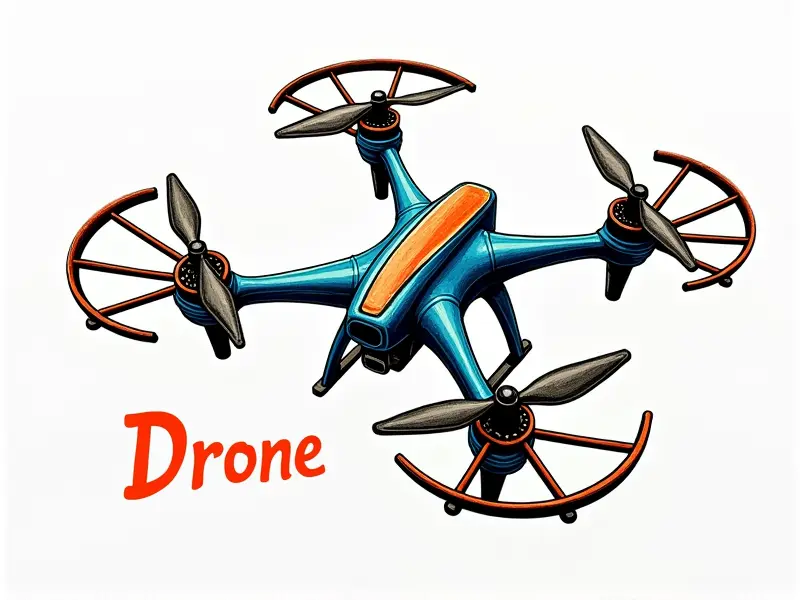How to calibrate a quadcopter?

How to Calibrate a Quadcopter: A Comprehensive Guide
Calibrating your quadcopter is an essential step in ensuring that it performs at its best. Proper calibration allows for optimal flight performance, stability, and control, making the difference between a mediocre flying experience and one that's smooth and responsive. This guide will walk you through everything you need to know about calibrating your quadcopter.
Why You Need to Calibrate Your Quadcopter
Calibration is crucial for several reasons:
- Precision Control: Calibration ensures that the flight controller accurately interprets user inputs, leading to precise and responsive control over your quadcopter.
- Battery Efficiency: Properly calibrated sensors can help optimize battery usage, extending flight time by ensuring efficient power consumption.
- Fault Detection: Calibration helps identify any hardware issues early on, allowing you to address them before they cause problems during flight.
Quick Guide: Calibrating Your Quadcopter
The process of calibrating your quadcopter can vary slightly depending on the brand and model. However, most drones follow a similar procedure:
- Initial Setup: Connect your quadcopter to your remote control via Bluetooth or another connection method.
- Sensor Calibration: Calibrate the accelerometer and gyroscope sensors for accurate orientation readings.
- Magnetometer Calibration: Ensure that the magnetometer is correctly aligned with Earth's magnetic field.
- PID Tuning: Adjust the Proportional, Integral, and Derivative settings to fine-tune flight stability.
Mastering Quadcopter Calibration in Minutes
To master quadcopter calibration quickly, follow these steps:
- Read Documentation: Consult your drone's manual for specific instructions and recommended settings.
- Practice Regularly: Calibrate your drone before each flight to ensure optimal performance.
- Troubleshoot Issues: If you encounter problems, refer to troubleshooting guides or forums for solutions.
Achieving Precision with Quadcopter Calibration
Precision in calibration is key to achieving smooth and stable flight. Here’s how to achieve it:
- Accurate Sensor Placement: Ensure sensors are mounted correctly without any interference.
- Consistent Environment: Calibrate your drone in a stable environment free from magnetic disturbances.
- Detailed PID Settings: Fine-tune the PID values to match your flying style and conditions.
The Ultimate Guide to Calibrating Quadcopters
This comprehensive guide covers all aspects of quadcopter calibration, including:
- Sensor Calibration: Detailed steps for calibrating the accelerometer, gyroscope, and magnetometer.
- PID Tuning: Instructions on adjusting PID settings for optimal flight stability.
- Performance Optimization: Tips for maximizing battery life and overall performance.
Fast and Effective Quadcopter Calibration
To calibrate your quadcopter quickly, follow these tips:
- Use Quick Calibration Modes: Many drones offer quick calibration modes that speed up the process.
- Leverage Software Tools: Utilize software tools provided by manufacturers for efficient calibration.
- Regular Maintenance Checks: Perform routine checks to ensure sensors remain calibrated over time.
Optimize Performance with Quadcopter Calibration
Calibration is not just about initial setup; it’s also crucial for maintaining performance. Here are some tips:
- Monitor Battery Levels: Regularly check battery levels and condition to ensure optimal power delivery.
- Adjust PID Settings: Fine-tune PID settings based on flight conditions and your flying style.
- Update Firmware: Keep firmware updated for the latest calibration features and bug fixes.
Easy Tips for Perfect Quadcopter Calibration
Making sure your quadcopter is perfectly calibrated can be straightforward with these tips:
- Follow Manufacturer Guidelines: Stick to recommended procedures provided by the manufacturer.
- Use Calibration Tools: Take advantage of calibration tools and apps designed for specific drone models.
- Practice in Ideal Conditions: Calibrate your quadcopter under ideal conditions, such as indoors or in a controlled outdoor environment.
Essential Steps for Calibrating Your Drone
The essential steps to calibrate your drone are:
- Connect the Remote Control: Ensure that your remote control is paired with the quadcopter.
- Calibrate Sensors: Follow the manufacturer's instructions for sensor calibration.
- Tune PID Settings: Adjust PID values to achieve optimal flight stability and responsiveness.
Beginner's Guide to Quadcopter Setup & Calibration
If you're new to quadcopters, here’s a beginner-friendly guide:
- Understand Basic Components: Familiarize yourself with the main components of your drone.
- Follow Initial Setup Instructions: Carefully follow the initial setup instructions provided by the manufacturer.
- Practice Calibration: Regularly practice calibration to get comfortable with the process and understand its importance.
The Importance of Proper Quadcopter Setup
A proper quadcopter setup is vital for a safe and enjoyable flying experience. Here’s why:
- Flight Safety: A well-calibrated drone reduces the risk of crashes or malfunctions.
- Flying Comfort: Proper calibration ensures smooth, responsive control over your quadcopter.
- Battery Efficiency: Optimized settings help extend flight time and improve overall performance.
Conclusion
Calibrating your quadcopter is a critical step in ensuring it performs at its best. By following the steps outlined in this guide, you can achieve precise control, optimize battery usage, and identify potential issues before they become problems. Regular calibration will enhance your flying experience, making every flight smooth and enjoyable.

